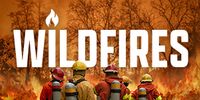Sargeant Paul Leaden with the CN Police Service says this year marks the 20th anniversary of Rail Safety Week and it's a good time to remind everyone about the dangers of unsafe behavior around trains.
"In Canada, last year there was 232 incidents regarding the railways resulting in 66 fatalities, and 43 serious injuries. So it's a very big focus for us daily through enforcement and education. We like to engage with different members of the public and partnering agencies, because obviously safety is a collaborative issue for us, and we all need to put that effort in to try and prevent these incidents. "
Leaden says one incident is one too many adding that there are fines in place for violating railway regulations and the costs associated with those fines vary from province to province.
"The fines in Manitoba for disobeying a railway crossing warning device, or proceeding before it's too safe is $299. For trespassing, it's under the Railway Safety Act. It's a federal offense. In Manitoba, it's actually $900 and that's just if you're crossing the tracks, or walking your dog on the railway property. You can get a $900 ticket, and it varies from province to province."
CPKC Chief of Police – Canada Al Sauve says incidents can happen in a split-second and can have tragic and far-reaching consequences for your family, friends and community.
"Rail safety requires constant vigilance, and CPKC asks that everyone think about their safety around railway property. We continue to focus education and enforcement efforts toward building communities of rail safety ambassadors young and old. We want everyone to go home safely."
Leaden points out at 90 km an hour the average emergency stopping distance for a train is around 1,800 meters or the length of 18 football fields.
"So if you're driving, the most important thing that you can do is be aware and pay attention to your surroundings, just like any other intersection. If you're coming up to a level railway crossing, keep in mind, that there's going to be different levels of protection. So you might have lights and gates at some crossings, and others may just have a crossbuck, which means you must yield the right of way to the train, some have a stop sign. So when you're approaching level crossing, always be very, very aware. Keep in mind that trains can come any time of the day and night, at any speed from any direction. So be prepared to stop. If it's winter, you know, drive to the conditions. Give yourself a lot more time to stop, make sure you're stopping at least five meters from the nearest rail, and make sure that you know the direction that the train would be coming from. Often the tracks could be angled, and they may not be perpendicular to the road. So you just really want to just have that overall awareness. Be prepared to stop, make sure you're going the correct speed, driving the speed limit as you approach the crossing, and treat it like any other intersection."
Leaden adds another key issue for the railways is trespassing.
"Very often people trespass. They don't realize, first of all, it's illegal. It is a federal offense, you can be charged for trespassing, but more importantly, is the safety issue. If people didn't trespass, then we wouldn't have pedestrian fatalities on railway property. "
He points out there are a lot of dangers associated with trespassing beyond just the train striking you.
"It's an industrial environment. So you have tracks that are being switched, so the tracks can shift. You know, if a train passes in the proximity, you might have a loose chain, you might have ballast, rock, or other types of items falling off the train or being projected from underneath the train. So there are a lot of inherent dangers in trespassing.
Western Canadian Safety Train CEO Perry Pellerin says as we strive to enhance railway safety across Canada, they strongly urge the public to stay vigilant and prioritize safety near railway tracks and crossings.
"Railway safety is a shared responsibility, and it is imperative for individuals to actively contribute to safeguarding both their personal safety and that of their communities.”
Ontario has the most rail lines in Canada, followed by Saskatchewan, Manitoba, and Alberta.
Saskatchewan Highways Minister Lori Carr says rail is an important part of our provincial transportation system, carrying Saskatchewan’s food, fuel, fertilizer, and other goods to market.
"Making sure these goods are moving efficiently is important to the provincial economy, but most importantly we need to ensure they arrive to their destination safely.”
There are 13 short line railways in Saskatchewan. Short lines are used to move crops, oil and lumber and link more rural locations to larger national rail lines of CN and CPKC. In total, there are more than 2,000 km of railways under provincial jurisdiction, with safety as a top priority.
Leaden admits it can be frustrating to wait if you're going to work in the morning. But unfortunately, if you don't, and you take a chance, you could end up having life-altering or worse consequences.
This year also marks the 100th anniversary of the CN Police, Leaden notes the CN Police are a federally sworn police agency that really does the same job as any other police.
"We work to promote safety, investigate offenses, and preserve the peace. The difference with us is, because we're railway police, all of the activities that we partake in, relate to the protection of persons and property relating to the railway. And of course, with trains moving across the country the way they are the safety of not just CN employees, but the traveling public is a big part of our mandate, and what we do day to day."









